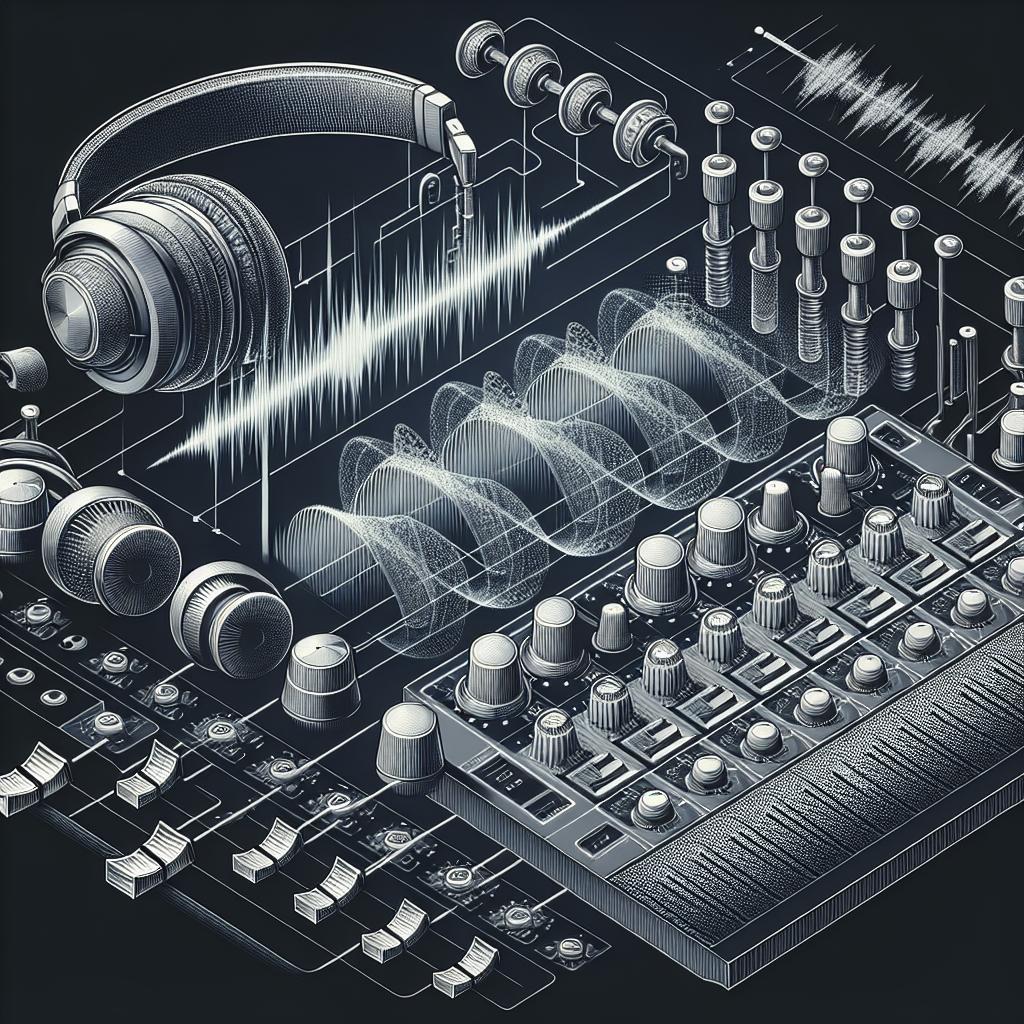“`html
Audio Panning Guide
Panning is a pivotal element in music mixing that brings depth and dimension to your tracks. By strategically placing sounds in the stereo field, you can create an immersive listening experience for your audience. This guide explores the art of panning different instruments, including drums, bass, vocals, guitar, piano, and synths. Whether you’re a seasoned mixer or a budding enthusiast, this resource will offer insights and techniques to enhance your mixes. Delve into the nuances of each section and discover how subtle tweaks can elevate your sound to new heights.
Drum Panning
When it comes to drum panning, envision the kit from the perspective of a drummer seated at the throne. The kick drum, being the heartbeat of the track, typically remains centered to ensure a solid foundation. Meanwhile, panning the snare slightly to the left or right adds a natural spread, simulating the distance of the snare from the audience.
Cymbals and toms can be spread across the stereo field to enhance the width of the mix. For instance, placing the hi-hat towards the right channel and the ride cymbal towards the left creates a balanced sonic picture. This method not only brings dynamics but also provides clarity, allowing each component of the kit to breathe within its space.
Bass Panning
Bass is crucial for grounding a track, and its presence in the mix is often felt more than it is heard. Traditionally, bass is panned to the center to anchor the mix and provide a consistent driving force. Centering the bass ensures that it is perceived equally across speakers, aiding rhythmic and harmonic stability.
In certain creative instances, subtle panning shifts can add interest. Utilizing stereo bass effects or drawing away from the center can intrigue when integrated with other elements. However, use this technique judiciously as overly wide bass frequencies can cause phase issues in the overall mix.
Vocal Panning
Vocals are typically the focal point of a song, deserving special attention when it comes to panning. Lead vocals should predominantly occupy the center of the stereo field to maintain focus and presence. This central placement ensures that the lyrical content is clear and emotionally impactful.
Backing vocals, however, offer more flexibility. By panning harmonies to the sides, you can create a lush vocal landscape. This not only augments the lead vocal but also adds a rich, textured layer to the mix, enhancing the emotive quality of the track.
Guitar Panning
Guitar tracks present a versatile opportunity in panning, offering creative potential to define the tone and atmosphere of a track. For electric guitars, consider panning rhythm parts hard left and right to establish a wide sonic stage, while placing solos or lead parts closer to the center for prominence.
Acoustic guitars can benefit from subtle panning to the left or right to complement vocals or other key instruments. This technique brings a sense of space and intimacy, particularly in acoustic or singer-songwriter genres. Pairing this with appropriate EQ and reverb can further enhance the desired effect.
Piano Panning
The piano’s full range can be beautifully captured and highlighted through skillful panning. Upright or grand pianos often benefit from slight panning of the lower and upper registers to mimic the instrument’s natural breadth. This offers realistic spatial separation and tonal depth.
In ensemble settings, centering the midrange of the piano slightly off-center can create a balanced soundstage with other core instruments. The goal is to ensure that the piano can sit comfortably within the mix without overshadowing other essential elements.
Synth Panning
Synths are inherently versatile and can be manipulated to create vast soundscapes. With stereo synthesizers, employing panning automation can add movement and energy to your track, transforming static sounds into dynamic experiences.
Lush pads can be spread widely to fill the stereo field, while arpeggiated synth lines benefit from movement across left and right channels. Experimenting with panning can introduce exciting sonic textures, ensuring your synth elements are both engaging and impactful.
Next Steps
| Instrument | Panning Techniques |
|---|---|
| Drums | Centered kick, spread cymbals and toms across the stereo field. |
| Bass | Often centered, subtle effects for creative impact. |
| Vocals | Lead vocals centered, harmonies and backing vocals spread for texture. |
| Guitar | Rhythm guitars wide, solos centered for focus. |
| Piano | Natural separation between registers, midrange slightly off-center. |
| Synths | Panning automation for movement, wide spread for pads. |
“`


